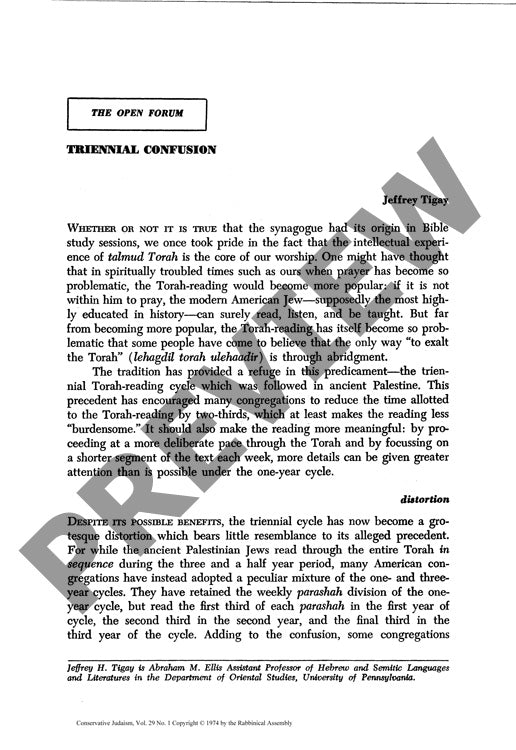Triennial Confusion
Couldn't load pickup availability
Ancient Palestinian Jews read the Torah sequentially over three and a half years, yet many modern American synagogues have adopted a markedly different approach to triennial reading cycles. Rather than following this historical precedent, contemporary congregations often divide weekly parashot into thirds across three years while maintaining annual cycle divisions. Through analysis of the Mishnah, Jerusalem Talmud, and medieval travel accounts, this research reveals how current practices violate the mishnaic principle of ein midalgin ba-torah (no skipping in Torah reading) and create problematic narrative discontinuities that fragment biblical stories across multiple years. While concerns about congregational unity and Simhat Torah observance merit consideration, historical evidence from medieval Cairo demonstrates that annual and triennial cycle communities successfully coexisted. Rather than mechanically dividing existing parashot, authentic implementation of triennial cycles demands sequential reading and comprehensive liturgical planning. The findings suggest that congregations would better serve their communities by addressing accessibility through improved translations and contemporary commentaries rather than by abridging Torah readings.

More Information
-
Physical Description
-
Publication Information
Published 1974
ISBN
-
Publication Credits
Jeffrey Tigay

